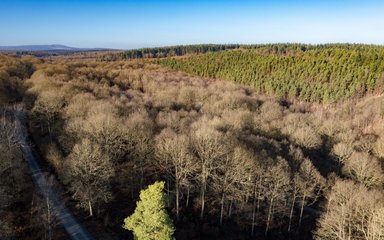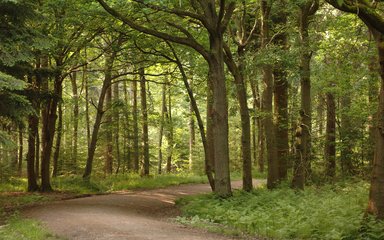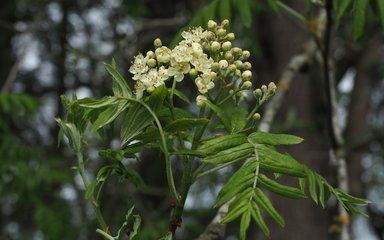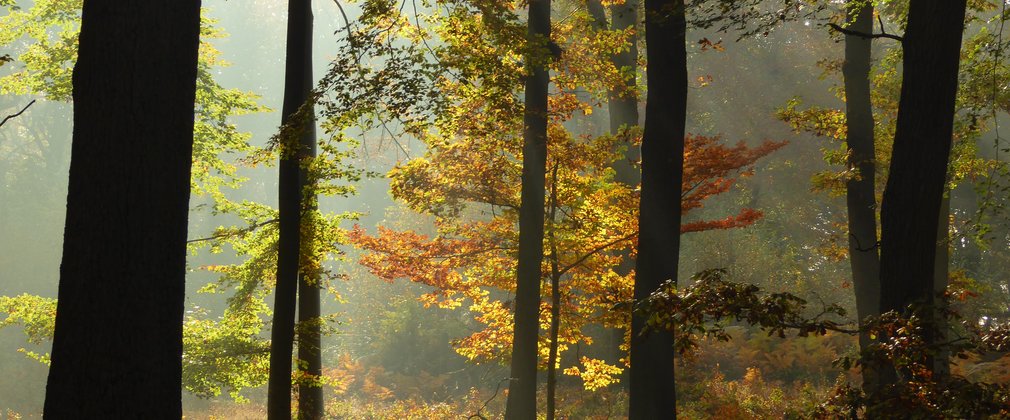The ‘Foresta de Wyre’
Straddling the border of Shropshire and Worcestershire, the Wyre Forest area is known to have been wooded since at least 900AD. The ‘Foresta de Wyre’ is mentioned in the Domesday Book, Britain’s earliest record commissioned by William I in 1085.
Historically, the ‘Foresta de Wyre’ was once a Royal forest and parts were fenced off as a Royal Chase for hunting deer. It is thought to have once formed an almost continuous forest with the Royal forests of Kinver to the east, Feckenham to the south and Clee to the west.
The forest was popular for hunting throughout medieval times, but gradually the wood began to be coppiced in order to produce charcoal, which was used to fire up the furnaces in the new, local iron works. Coppicing is an ancient woodland practice whereby trees are periodically (every 15 to 20 years) cut down to ground level to produce a renewable harvest of poles for charcoal and firewood. Small clusters of charcoal burning hearths can still be found throughout the woodland as well as distinctive earthworks that were once ‘bell pits’ used to mine coal from beneath the forest floor.

The industrial revolution
Although hard to believe now, Wyre Forest was once the centre of enormous economic activity, with the production of charcoal fuelling many local industries. Coal mining on an industrial scale began in the early 1600s at sites near Pound Green.
In the 1700s, industry and shipbuilding began to drive up the demand for coppiced wood, timber and charcoal. Oak bark was used in the local tanneries and brought down from the forest via Tanners Hill and Welch Gate. By the mid-1800s, there were lots of families working as basket makers, charcoal burners, wood cutters and sawyers in the town of Bewdley.
As the 1900s approached, the development of the Severn Valley railway line had a major impact on the landscape of Wyre Forest. The Bewdley to Woofferton lines opened in 1869 which widened access and travel throughout the West Midlands.
Fruit growing also increased around this time to an industrial scale, which served both local markets and the increase in demand from Birmingham and the Black Country. Orchards were established within Wyre Forest and many still exist in an area known as Ruskin Land, named after John Ruskin who maintained them.
The 20th Century
In September 1919, the Forestry Commission was founded following the First World War to restore the nation’s woods and forests and produce a reliable, home-grown timber reserve. The Forestry Commission bought parts of Wyre Forest in 1925 and slowly cleared the oak woodland to replace with new conifers, leading to decreased biodiversity but increased timber production.
In 1964, the last train ran through the Forest - a branch of the Severn Valley Railway - and the line was closed, signalling an end to Wyre’s long industrial history. The trackbed of the railway is now a cycling route through the forest.
Following the Forestry Act of 1967, the Forestry Commission was allowed to encourage recreational use of the forest estate by increasing public access and building visitor centres, car parks and forest walks. Wyre Forest Visitor Centre was built in 1976, and refurbished 1996.


The Arboretum
In 1677 a Whitty Pear tree was reported in Wyre Forest and it was thought to be the only one in Britain. 185 years later it sadly burned down, but luckily some young trees had been grown from seeds of the original. One of these trees was donated by the Woodward family of nearby Arley Castle. It was planted in 1916 by Mrs Mary Jane Woodward in memory of her son Robert who was killed in the First World War.
In 1984, The Forestry Commission and The Wyre Forest society created the Arboretum, centred around the famous Whitty Pear. It is now home to over 100 different tree species from around the world!
In March 2013 another Whitty Pear was planted by Hermione Gerry, neé Woodward, near to the tree planted by her grandmother in 1916. Mrs Gerry reared this new sapling from a seed of a tree planted at Arley in the 1930s, itself a descendent of the original Wyre Forest tree.
Present Day
The Forestry Commission became Forestry England in 2019, and today we manage around two thirds of Wyre Forest jointly with Natural England. We work together to carefully manage the forest for timber, public recreation and wildlife.
It is England’s largest woodland National Nature Reserve and many areas are designated as Sites of Special Scientific Interest (SSSI).
You will find a number of different habitats here, from dense woodland to open grassland meadows, old orchards, areas of scrub and steep-sided valleys, created by geological faults. It is home to a vast array of wildlife including protected mammals, reptiles and birds. Its butterfly and moth populations are significant, with 58% of the UK’s butterfly species recorded here.
Some parts of Wyre are managed primarily for timber production from native oaks to faster growing coniferous trees. It is being sustainably managed to slowly revert large areas back to native broadleaf trees.

